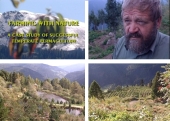
 4
4




Joe's Garden Journal Blog
wholeviewfarm.blogspot.com
 2
2




Joe's Garden Journal Blog
wholeviewfarm.blogspot.com
 4
4




Permaculture Design and Consultation.
-Commercial Aquaponics System Design
-Passive Solar Greenhouses
PermacultureSchools.com ~ Permaculture Schools Blog
 3
3




 1
1





Ajila Ama Farm Western North Carolina
www.facebook.com/ajilaama
 1
1




It's never too late to start! I retired to homestead on the slopes of Mauna Loa, an active volcano. I relate snippets of my endeavor on my blog : www.kaufarmer.blogspot.com

 1
1




Ask me about food.
How Permies.com Works (lots of useful links)





Julia Winter wrote:Josef, you have a potential resource in Growing Power, over in Milwaukee. There they are growing tilapia in tanks in hoop house style greenhouses under lettuces. They use compost to warm the greenhouses, and utilize local waste products, like brewer's mash, for their compost. Will Allen has got a good system going there. You could probably go and tour it.
 1
1




Joe's Garden Journal Blog
wholeviewfarm.blogspot.com




 1
1




 1
1




Joe's Garden Journal Blog
wholeviewfarm.blogspot.com
 1
1




Medicinal herbs, kitchen herbs, perennial edibles and berries: https://mountainherbs.net/ grown in the Blue Mountains, Australia
 1
1








Medicinal herbs, kitchen herbs, perennial edibles and berries: https://mountainherbs.net/ grown in the Blue Mountains, Australia

 2
2




Works at a residential alternative high school in the Himalayas SECMOL.org . "Back home" is Cape Cod, E Coast USA.








Medicinal herbs, kitchen herbs, perennial edibles and berries: https://mountainherbs.net/ grown in the Blue Mountains, Australia





 1
1




Works at a residential alternative high school in the Himalayas SECMOL.org . "Back home" is Cape Cod, E Coast USA.
 1
1








My project thread
Agriculture collects solar energy two-dimensionally; but silviculture collects it three dimensionally.




Medicinal herbs, kitchen herbs, perennial edibles and berries: https://mountainherbs.net/ grown in the Blue Mountains, Australia
 1
1




My project thread
Agriculture collects solar energy two-dimensionally; but silviculture collects it three dimensionally.
 1
1




 1
1




 1
1




 1
1





|
I'm just a poor boy, I need no sympathy, because I'm easy come, easy go, little high, little low, little ad
Freaky Cheap Heat - 2 hour movie - HD streaming
https://permies.com/wiki/238453/Freaky-Cheap-Heat-hour-movie
|



.jpg)


